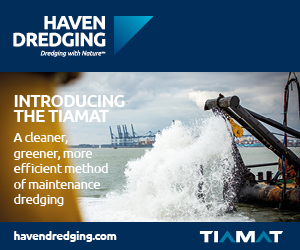
4 minute read
Mississippi River Drought Affects Navigation
BY JANET MEREDITH, ST. LOUIS DISTRICT
For the second consecutive year, the U.S. Army Corps of Engineers St. Louis District takes on the challenge of keeping commerce moving on the navigable waterways in the central part of the United States.
Collaborating with the River Industry Action Committee and the U.S. Coast Guard, the district uses a balanced approach to mitigate the effects of the low water and to determine the best path forward using dredging methods to maintain the 9-foot navigation channel. With no significant rain in the forecast going into the month of September, the Mississippi River continues to show declining river levels impacting navigation and barge shipping at a very crucial time as farmers in the Midwest begin their harvest season. In anticipation of the low-water conditions, dredges from other districts have been mobilized for channel maintenance to best maintain navigation on the Mississippi River. When compared to yearly data going back to 1967, the Mississippi River levels are approximately 8 feet below average for this time of year.

The district’s dredge Potter, built in 1932, began its dredging season on July 16 at various locations on the Upper Mississippi River. When dredging, the 91 year-old Potter with its crew of 50 personnel fills an Olympic-sized swimming pool every hour.
“The crew on the dredge Potter is working full time to maintain this critical waterway that supports the global supply chain,” explained Lou Dell’Orco, chief of operations. “Working with our partners and industry is critical in enabling waterborne transit during the harvest season and throughout the year to support our nation’s economy. Since we didn’t have high water this spring, the channel didn’t shift as much …”

The dredge Goetz, built in 2005 and with a crew of 50 members, will soon be assisting the Potter in areas located within Pools 24 and 25 on the Mississippi River. Both dredges work 24/7 to keep commerce moving unrestricted in the district’s area of operation by maintaining the authorized navigation channel. Depending on need, other dredges may be called in this year to assist.
Additionally, the St. Louis District’s water management office closely monitors the current conditions and forecasts precipitation by keeping a close watch on water levels. Water managers share this information through notices to mariners for cautious navigation and prepare for seasonal variabilities in water levels. The water management office looks closely at the impacts of runoff and plans for the effects resulting from lower Missouri River flows leading to a longer dredging season. Approved water control plan deviations are implemented at locks and dam structures and lake projects when they will be the most useful.

Not all challenges are easy to mitigate and overcome. The impacts from reduced loading capacity, shallow drafts, and tow size, along with stalled agriculture products at ports, have a cascade effect on industrial shipping and the tourism industry, since many jobs depend on both. The importance of the 12,000 miles of navigable inland waterways, ports, and harbors and their ability to ship 500 million tons of freight each year is an incredible mission and has a significant impact on our country and worldwide markets. When barges are forced to carry one-third less product to meet the 9-foot draft and narrow channel, the economic impacts are significant.
Fleeting space around the St. Louis harbor is reduced by low water conditions, thus requiring private dredging. The entrance into the Kaskaskia Regional Port and Southeast Missouri Regional Port is impacted at low water levels, limiting the amount of cargo that gets loaded at each facility. In 2022, the St. Louis District dredged 9 million cubic yards of material from the bottom of the river in 70 different locations. The lessons learned by the U.S. Army Corps of Engineers service base team, partners, and industry professionals will be utilized this year to maintain common operating procedures through weekly navigation channel operating meetings, and working to find solutions that best serve the needs of all to keep commerce moving on the river.










